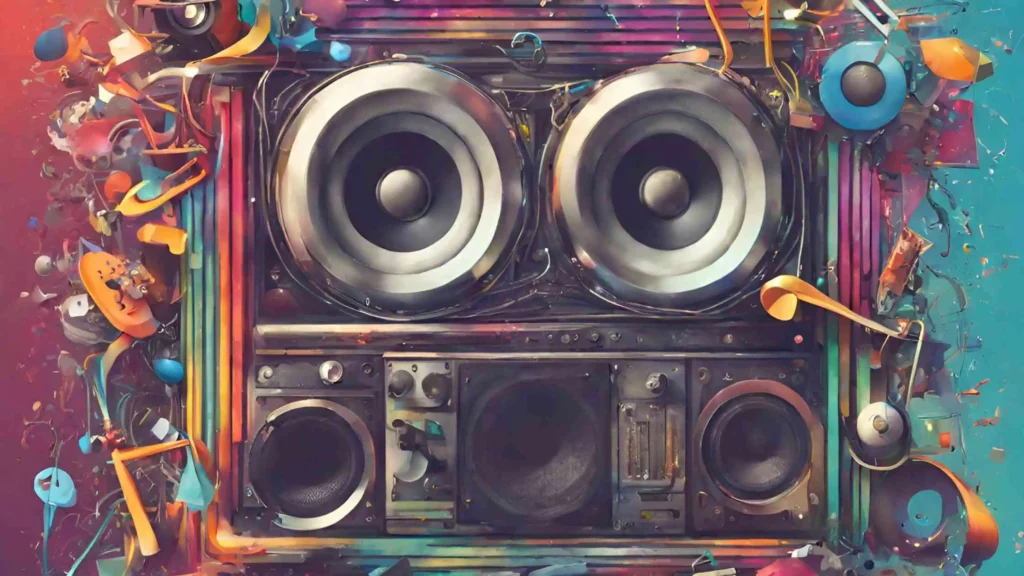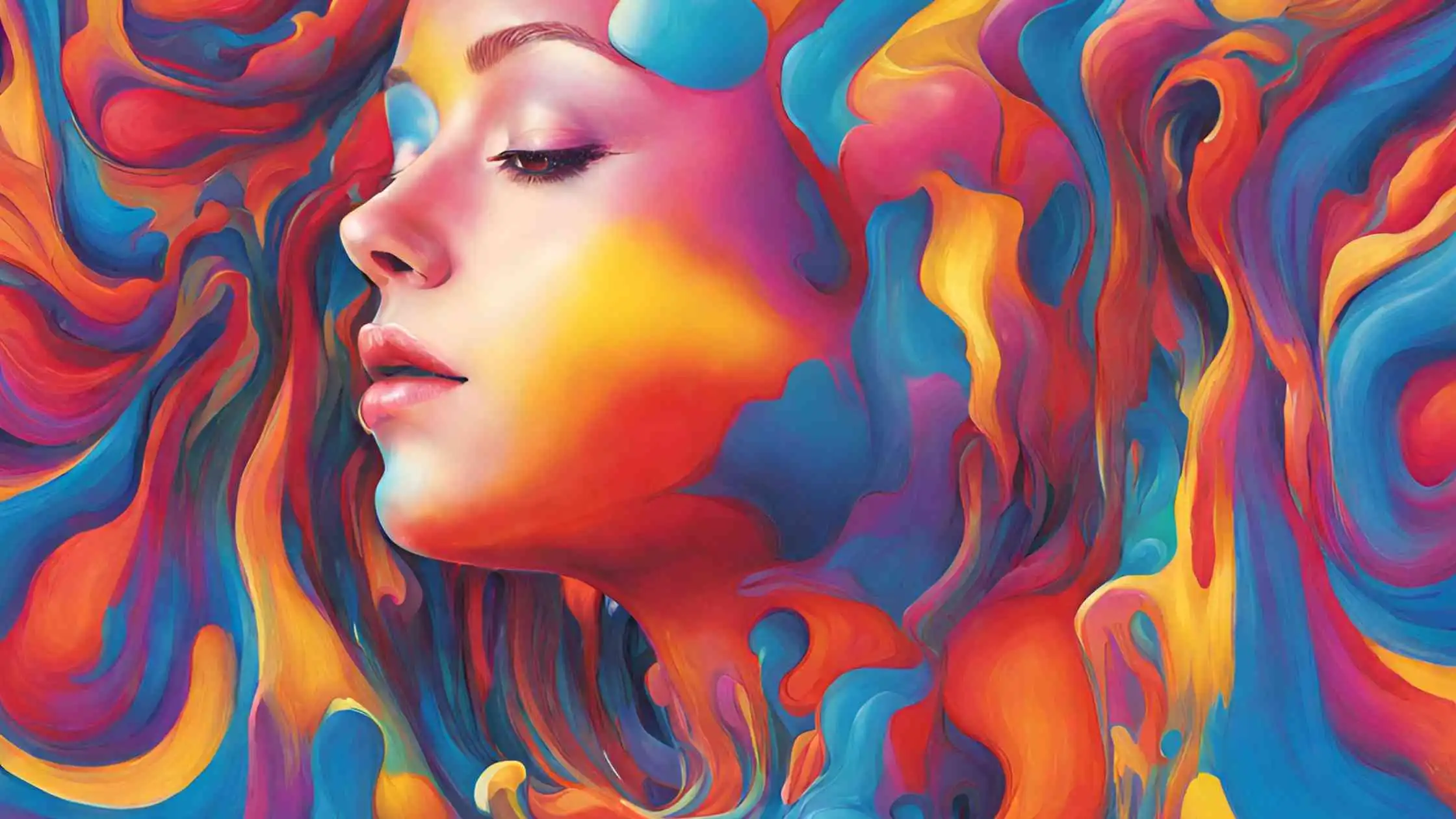Chromesthesia, or sound-color synesthesia is definitely a fascinating aspect of how our minds work. It is when sounds cause us to visualize color, figure and movement unwittingly. Imagine it as a new link between the ears and eyes that breaks the conventional sense of listening apart from sight.
Synesthesia, in general terms, is a special brain thing where one sense or thought creates an automatic feeling at a different place. This includes chromesthesia, which is like a seamless mix of the sounds and sights we hear. It involves seeing color when hearing sound, but for each person this is unique – they have their own combination of sounds and colors.
Various Types of Chromesthesia
Chromesthesia, a fascinating type of synesthesia, comes in different forms, revealing interesting connections between what we hear and see:
Sound-to-Color Synesthesia: This is the most prevalent type which results in an automatic formation of color, form and motion.
Emotional Chromesthesia: This category is emotion-driven; it associates a certain feeling with a specific color thus enhancing the emotional quality of synesthesia.
Musical Chromesthesia: The musical notes prompt different colors of people which are associated with certain pitches, tones or instruments.
Voice Chromesthesia: This type is connected to the voice characteristics, such as pitch and accent. It unites sound with color in a synesthetic way.
Environmental Chromesthesia: Apart from music, everyday sounds in the environment can also cause colorful synesthetic phenomena.
The knowledge of these types helps us to comprehend the intricacy nature of synesthesia, as a slight glance into the wonderfully innovative way our senses interrelate.
Early Observation
Centuries ago, people noticed that some folks could see colors when they heard sounds. Famous historical figures might have been among them, as stories suggest. But it’s only in more recent times that scientists started talking about this colorful hearing, calling it chromesthesia. Researchers and experts began looking closely at how people experience and describe the colors they see when they hear sounds. They wanted to understand the fascinating connection between what we hear and what we see, exploring this unique blending of our senses.
Colors and Sounds
An intriguing type of synesthesia, involves connecting sounds to colors, creating a unique way of experiencing the world. Let’s explore this phenomenon in simpler terms:
Connecting Sounds to Colors: That certain sounds, especially musical notes, are linked to specific colors without control. This makes a special way of experiencing things where sounds make you see vibrant colors.
Matching Musical Notes with Colors: People with its effects often link different musical notes, tones, or instruments with specific colors. For instance, a particular musical chord might make someone see a mix of colors, making their listening experience more colorful.
Emotional Impact of Colors: The colors seen in chromesthesia can have emotional meaning. Some people with this condition feel that certain sounds always bring specific colors, and the brightness or intensity of these colors might reflect the emotional impact of the sounds they hear.
Chromesthesia and Art
The blending of senses, like hearing music and seeing colors, has sparked creative and special artworks. Artists, who are often inspired by music, use their imaginations to show the bright colors they see when they listen to sounds. A common way this happens, turns musical notes into a painter’s palette. This mix of senses doesn’t just impact how artists express themselves; it also brings together musicians and visual artists to work on projects together.
Musical Genres and Chromesthesia

Various types of music create different color experiences, forming a lively connection between what we hear and see. Classical music, with its complex compositions, often brings out a wide range of colors in our minds. The symphonies and detailed melodies can make us visualize a spectrum of colors, making the classical music experience more emotionally rich.
In the world of classical music, the colors we imagine can vary a lot. From pop to rock, each style within classical music can make us see different colors, influenced by factors like the music’s speed, instruments used, and overall mood.
Experimental music, known for being very creative and different, allows for exciting adventures in color imagination. The unusual sounds and structures in experimental compositions can create new and surprising connections between what we hear and the colors we see, challenging the usual ways we associate sound and color.
Scientific Research
This special thing happens in the brain when you hear music or sounds. It’s called chromesthesia. When this happens, you see colors, shapes, and movement, and you can’t control it. Scientists study this to understand how our brains connect what we hear with what we see. They even look into the emotional colors linked to chromesthesia. The colors we see aren’t random; they come from certain parts of our brain turning on. It’s like a cool dance between what we hear and what we see, making our senses work together in a fascinating way.
Misconceptions About Chromesthesia
A common mistake is thinking that everyone with synesthesia sees colors when they hear sounds. Even though chromesthesia involves seeing colors with sound, synesthesia includes different ways our senses connect, not just sound and color. Coping with chromesthesia means finding ways that work for you. Some people with synesthesia feel better by doing things like meditation and deep breathing to handle their senses. Talking with other people who have synesthesia or getting help from professionals can also be helpful in dealing with the specific challenges that come with chromesthesia.
Chromesthesia and Pop Culture
Pharrell, Lady Gaga, and Kanye West, famous musicians, have shared that they experience chromesthesia, a cool ability where they see colors when they hear music. This means they can understand and picture sounds through different colors. This special way of sensing things not only affects how they create music but also makes them unique as artists.
Technology and Chromesthesia
Digital platforms, especially Virtual Reality (VR), have completely changed how people with chromesthesia experience their unique perceptions. Recent experiments are looking into using VR technology to recreate what it’s like for those with its, making a virtual world where they can feel and interact with their cross-sensory sensations.
Projects like “Synesthesia in VR” demonstrate this innovation, giving individuals with chromesthesia exciting new ways to connect with their sensory experiences using technology. These advancements not only show VR’s potential to replicate synesthetic encounters but also act as helpful tools, offering fresh opportunities to understand and embrace the diverse sensory worlds of individuals with chromesthesia.
Medical Intervention
Unlike some health issues, developmental and acquired chromesthesia usually don’t require any special treatment. In rare situations where people feel bothered by the effects, talking to a counselor or therapist could be helpful. They can provide support and strategies to help individuals deal with their special way of sensing things.




